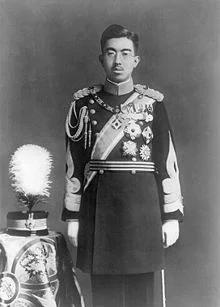On December 7, 1941, the Japanese Striking Force attacked Pearl Harbor with 50 support vessels and 6 aircraft carriers (Kaga, Akagi, Hiryū, Sōryū, Zuikaku and Shōkaku). Thousands of people lost their lives & got injured during this attack. The gruesome scars of that attack are still visible at Pearl Harbor. Book your Pearl Harbor tours today and witness the history to know what actually happened at Pearl Harbor.
Who led the attack on Pearl Harbor?
The Japanese leaders who were mastermind behind this attack include:
 Emperor Hirohito
Emperor Hirohito
Prince Hirohito became Emperor of Japan. He was the 124th Emperor.
He selected the name “Showa” to be remembered by. The name means “enlightened peace”. He sought diplomacy before the war but soon he was determined for war. He gave a deadline to end diplomatic negotiations with Washington and even for the preparation for war.
Admiral Isoroku Yamamoto
The Mind Behind Pearl Harbor
 Admiral Isoroku Yamamoto was the mastermind behind the Pearl Harbor attack and the air raid was his idea. Thinking that a victorious attack at Pearl Harbor would break America’s morale and stop it from interference, Yamamoto led a surprise strike on the US Pacific Fleet. It was also to get control of the western Pacific and Southeast Asia in order to obtain natural resources.
Admiral Isoroku Yamamoto was the mastermind behind the Pearl Harbor attack and the air raid was his idea. Thinking that a victorious attack at Pearl Harbor would break America’s morale and stop it from interference, Yamamoto led a surprise strike on the US Pacific Fleet. It was also to get control of the western Pacific and Southeast Asia in order to obtain natural resources.
The Emperor of the empire of Japan, Hirohito decided war against the United States and supported Yamamoto’s Idea. However, a number of officials and the Naval General Staff were against the attack. During the time of the annual war games, Yamamoto had convinced most of the members of the Naval General Staff to support the attack on Pearl Harbor. Yamamoto gave the ultimatum to the Naval General Staff that either the Pearl Harbor attack be allowed or he and the Combined Fleet staff would resign. Eventually, the attack was approved.
Chuichi Nagumo, Vice Admiral IJN
 Vice Admiral Chuichi Nagumo was in command of the carrier-centered Mobile Force (Kido Butai). The task force was made up of 6 carriers, 2 battleships, 3 cruisers, and 9 destroyers. On December 2, upon getting the signal from Tokyo, Chuichi Nagumo relayed it to his ships. The signal for the attack was “Climb Mount Niitaka 1208”.
Vice Admiral Chuichi Nagumo was in command of the carrier-centered Mobile Force (Kido Butai). The task force was made up of 6 carriers, 2 battleships, 3 cruisers, and 9 destroyers. On December 2, upon getting the signal from Tokyo, Chuichi Nagumo relayed it to his ships. The signal for the attack was “Climb Mount Niitaka 1208”.
The fleet reached near Oahu without getting sighted and the first wave of the attack was successful. Admiral Isoroku Yamamoto, after a year, said, “Events have shown that it was a great mistake not to have launched a second attack against Pearl Harbor.” On July 6, 1944, Chuichi Nagumo shot himself with a pistol on the Island of Saipan.
Mitsuo Fuchida
 Japan Striking Forces Commander at Pearl Harbor
Japan Striking Forces Commander at Pearl Harbor
The first wave of the attack on Pearl Harbor was headed by Commander Mitsuo Fuchida, the pilot who famously gave the signal Tora, Tora, Tora, the code words which meant they had achieved full surprise.
Fuchida’s first wave of the attack was successful with just 9 planes lost. In the second wave, it rose to 20. In Japan, after the attack on Pearl Harbor, Commander Mitsuo Fuchida became a national hero and granted an audience with Emperor Hirohito.

 Emperor Hirohito
Emperor Hirohito